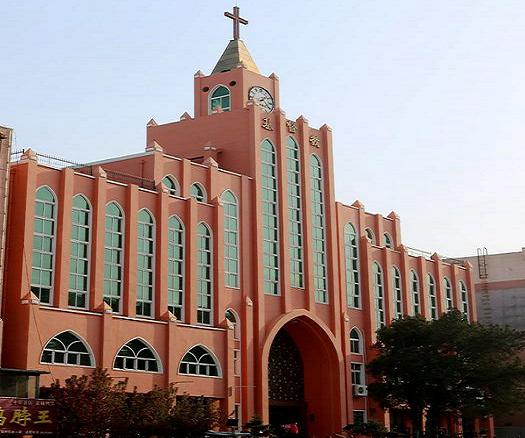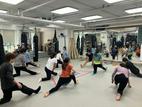From an obsolete church that was only 464 square meters 130 years ago, to a brand-new church building that is more than 3,600 square meters in the area; from the 80 baptized believers when church meetings had just resumed in 1980, to a congregation of more than 4,000 baptized believers at present.
Protestantism first entered western Liaoning from Jinzhou. According to the relevant historical data, in 1832, German missionary Karl Friedrich August Gützlaff (1803-1851) sailed from Thailand to Northeast China to sell Bibles. He first went to Jinzhou and later to Yingkou in the province of Liaoning.
Following in the footsteps of Gützlaff, Reverend James Carson, a missionary of the Irish Presbyterian Church of England, also came to Jinzhou in 1874 to sell books and preach, and he rented a mansion on South Street in the city and founded Gospel Church. In 1886, the Irish Presbyterian Church of England sent Reverend Shao Wufei (in Mandarin) to Jinzhou. In 1891, the church was relocated outside the East Gate (now the location of Jinzhou Christian Church). From then on, other Christian denominations also began coming to Jinzhou.
In 1892, Elder Gao Qilong and Elder Deng Futang of the Jinzhou Church went to Xingcheng, which was then part of Jinzhou, and Suizhong, respectively, to plant churches. In 1894, Irish missionary John Evans and his wife Sara McMordie came to Jinzhou to form the diocesan board of trustees, which was the highest authority of the diocese.
In 1900, the Boxers set fire to the Jinzhou Church and completely destroyed it. Upon the signing of the "Boxer Protocol," churches in Jinzhou, Jinxi (now Huludao), and Heishan were rebuilt after 1905. In 1907, the Jinzhou Church bought the property on Fude Street to build the eastern part of the church building. At that time, the church had around 200 believers.
In 1958, the Seventh-day Adventist Church merged with the Chinese Christian Presbyterian Church. At the same time, the preparatory committee of Jinzhou TSPM was once again established.
In August 1983, the Jinzhou Christian Church held its first meeting of representatives and established the Jinzhou TSPM as well as its Christian Council (renamed the Jinzhou CC&TSPM in 1986). In the autumn of the same year, the dedication ceremony of the Jinxi Church, the first church newly built in the western Liaoning area, was held.
As early as 1884, John Ross, a missionary of the United Presbyterian Church of Scotland, had already been holding regular theological training for missionaries in Shenyang. In 1890, the United Presbyterian Church of Scotland and the Irish Presbyterian Church decided to jointly conduct systematic theological training for evangelists throughout the northeast region. The whole training lasted for 4 years, students studied intensively for one month each year and served in various evangelical churches the rest of the time. In 1894, the Kwantung Presbyterian Church decided to add a four-year advanced theological course, which included two months of intensive study in Shenyang every year. The advanced course is the prototype of the Northeast Theological Seminary. The first advanced course in 1895 recruited seven students, and they graduated in March 1899; four of them were ordained as pastors after graduation.
The Christian church also participates in social charity work in Jinzhou, which includes medical and educational institutions.
The mission hospital ("Free Healing Hall") in Jinzhou: In 1886, an English doctor named Dr. Edward Bach (in Mandarin) purchased a piece of land in the east of Jinzhou City and established a mission hospital. In 1900, the Boxers burned down the hospital, which was rebuilt in 1905 and renamed the Christian Hospital. In 1913, Marion Macintyre, a missionary from Ireland, took over as director. She expanded the hospital premises and began to offer obstetrics and gynecology courses.
In the ninth year of the Republic of China (1920), the hospital was renamed the Women’s and Children’s Hospital. In the same year, Macintyre returned to Ireland due to illness, and Dorothy Hunter, a missionary from Ireland who was working in the mission hospital in Beizhen, came to Jinzhou to take over as the director.
In 1942, the agents of the Puppet Manchukuo in Jinzhou occupied the hospital, and the Women’s and Children’s Hospital was forced to suspend its service. In 1951, the hospital decided to cease operation on February 5.
Education: The Jinzhou School was founded by the English missionary Sara McMordie in 1895; the school accepted women of all ages, teaching them how to read and telling them about the Bible. In 1941, due to being assaulted by the Puppet Manchukuo agents and a lack of operating funds, the school had to discontinue.
In 1891, Irish doctor Thomas Brander came to Jinzhou, and, together with Reverend Shao Wufei (in Mandarin), bought 30 acres of land north of Shuangchazi Road at Dongguan in the city (now the location of the Fifth Middle School of Jinzhou City on Guohe Road), building residence buildings for pastors and teachers, as well as founding schools and mission hospitals, etc.
The old church building of the Jinzhou Church, built in 1891, which was only around 400 square meters, could no longer serve the needs of the believers. Therefore, in June 2002, the old building was demolished, and a brand-new church building with an area of up to 3,600 square meters emerged in July 2003. Presently, in the church, there are four pastors and three pastoral staff.
Over the years, the church has helped needy members of the congregation, donated money and goods, defended the truth, resisted heresy, consoled the sick, the disabled, orphans, and widows, and cared for the disadvantaged. After the May 12 Sichuan earthquake in 2008, the church donated more than 400,000 yuan to the areas affected by the disaster.
(Reported by a Gospel Times freelance writer in Jinzhou, Liaoning.)
- Translated by Joyce Leung












